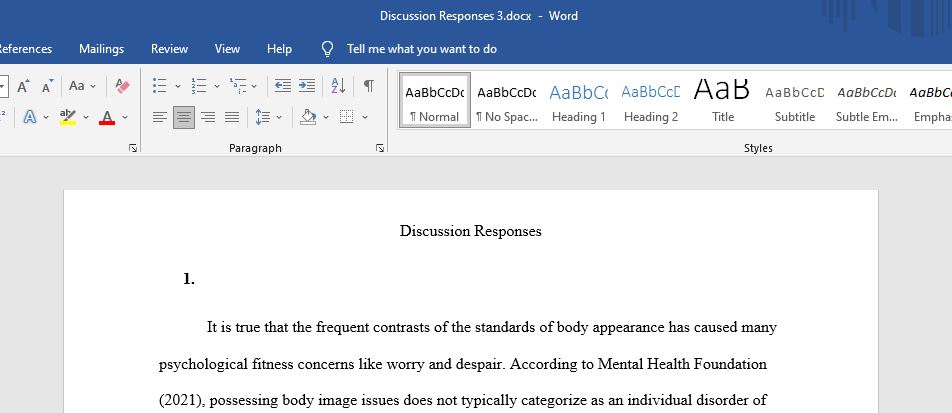Explain the influence that body image ideals have on eating disorders and other mental health disorders
1- Body image standards have a large impact on eating disorders and mental health disorders. The body types that are most portrayed in media (television, film, print, and social platforms such as Instagram/Facebook/TikTok, etc.) are often thin and without flaw. Because we are surrounded by the media in the present day and age, the general public is often tricked into believing that being thin is the norm and is most desired. Men and women all over the world compare their own bodies to the bodies they see on screen leading them to food restriction and disordered eating in hopes of looking thinner. This constant comparison has led to a myriad of other mental health issues such as depression and anxiety. According to an online survey conducted by the Mental Health Foundation with YouGov in March 2019, “Just over one in five adults (22%) and 40% of teenagers said images on social media caused them to worry about their body image” (Mental Health Foundation, 2020). The online survey also stated that over one third of adults said they have felt depressed or anxious due to their body image.
I believe that a tactic for promoting healthy nutrition habits while avoiding unhealthy concern over nutrition would be to open up the discussion about healthy nutrition habits to young children. Personally, if I had been talked to sooner about nutrition and body positivity, I could have saved myself from the cycle of comparison that often happens to teenage girls and continues into adulthood.
A way in which we can improve body image ideals in our society would be to continue to include “normal” bodies in the media. The public needs to see the body types of average men and women more often. Many companies such as Dove and Target have stopped airbrushing their models and include all shapes and sizes in their editorials which allows consumers to see their body types being normalized.
2- Explain the influence that body image ideals have on eating disorders and other mental health disorders.
Body image ideals are a distorted perception on one’s body shape. Having negative body images and body dissatisfaction involves feeling, shame, anxiety, self-consciousness and feeling like their body is flawed compared to others. The mental health disorder can also lead to low self esteem, isolation and depression.
Body image concerns can start as early as 6 years old and endure through a lifetime. By the time of age 6-12 years old for girls and are concerned about weight and becoming too fat. Over one-half of teenager girls and nearly one-third teenagers boys use unhealthy weight control habits such as; skipping meals, fasting, smoking, vomiting and taking laxatives.
Body image can affect us all differently depending on age, gender and cultures. There are traditionally different triggers and appearance related pressures. For example in the western culture girls often feel thin equals beauty and cultural ideal. Boys often are faced with social pressures to be lean and muscular.
2.Describe tactics for promoting healthy nutrition habits while avoiding an unhealthy concern/ over-obsession with nutrition?
Tactics for promoting healthy nutrition
1) choose good carbs not white starchy
2) eat foods with healthier fats and avoid high saturated fat and food with trans fat.
3) Eat more foods with fiber and whole grains
4) Incorporated more fruits and Vegetables
3. Briefly describe ways in which we can improve body image ideals in our society.
Ways we can improve our body image always starts with ourselves. I would definitely start with buys clothes that is comfortable but still complements my body shape. Promote positive thinking and habits but speaking positively over yourself and others.
Answer preview:

word limit:282
